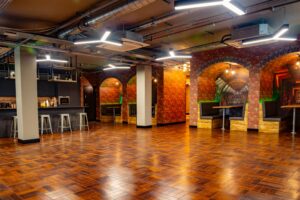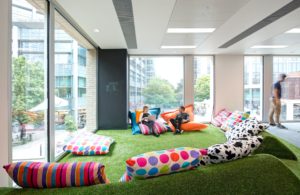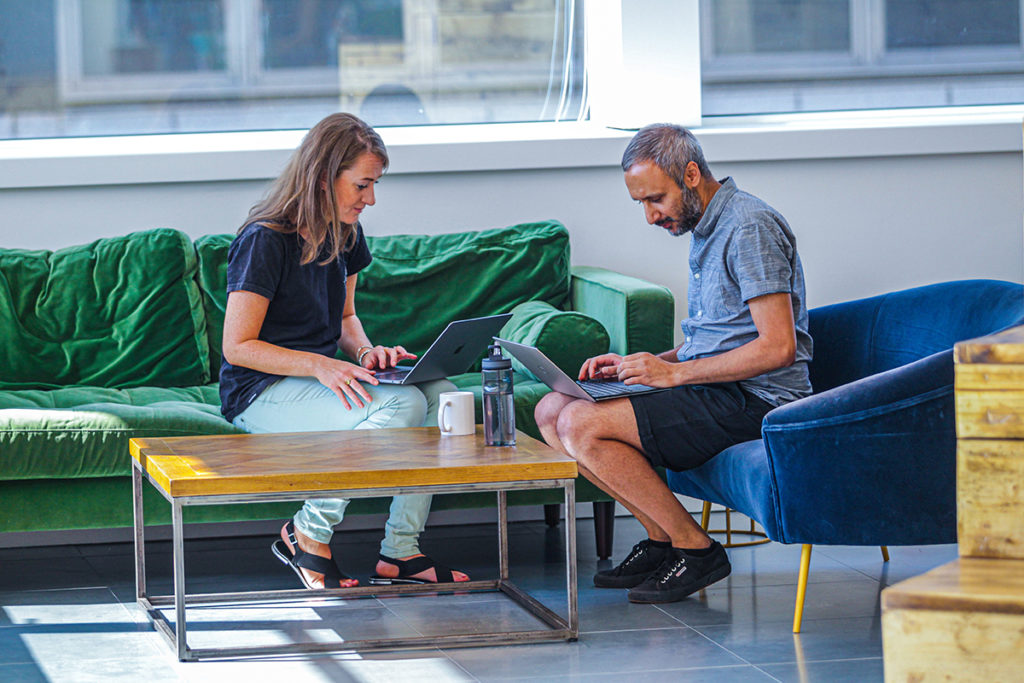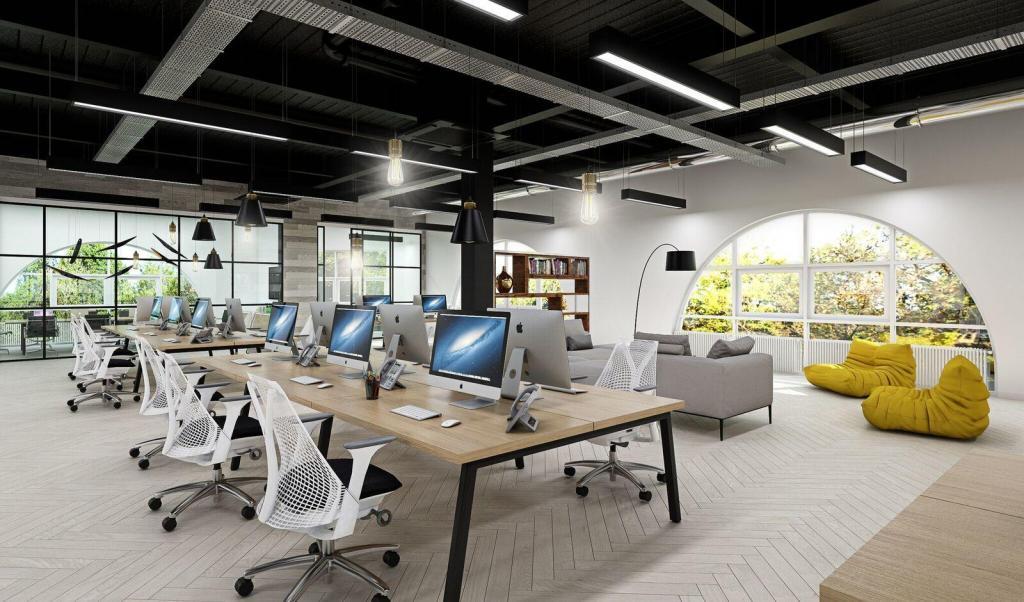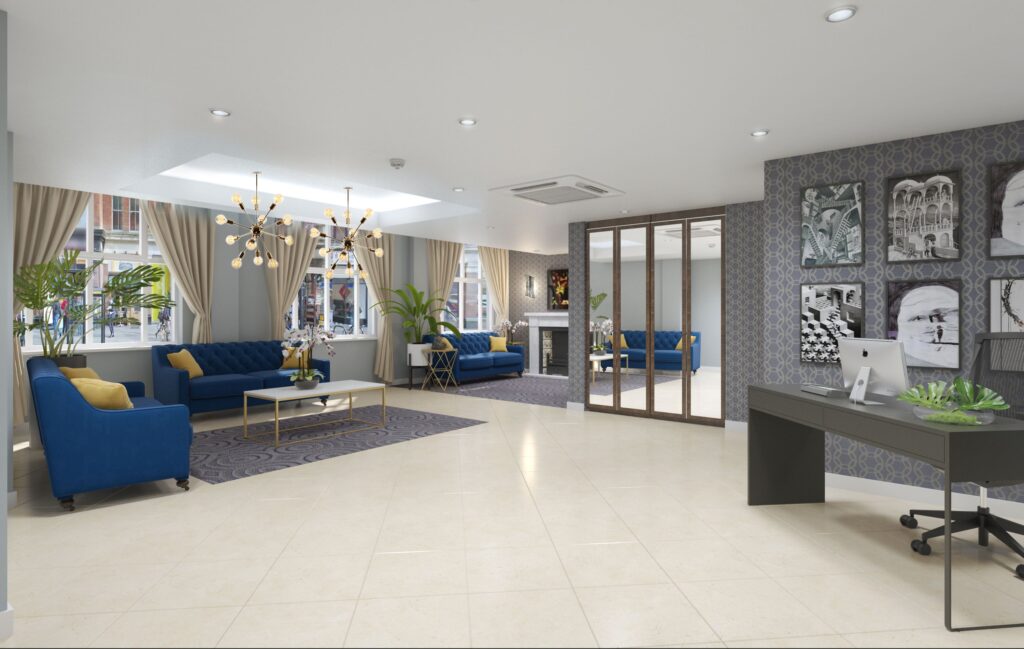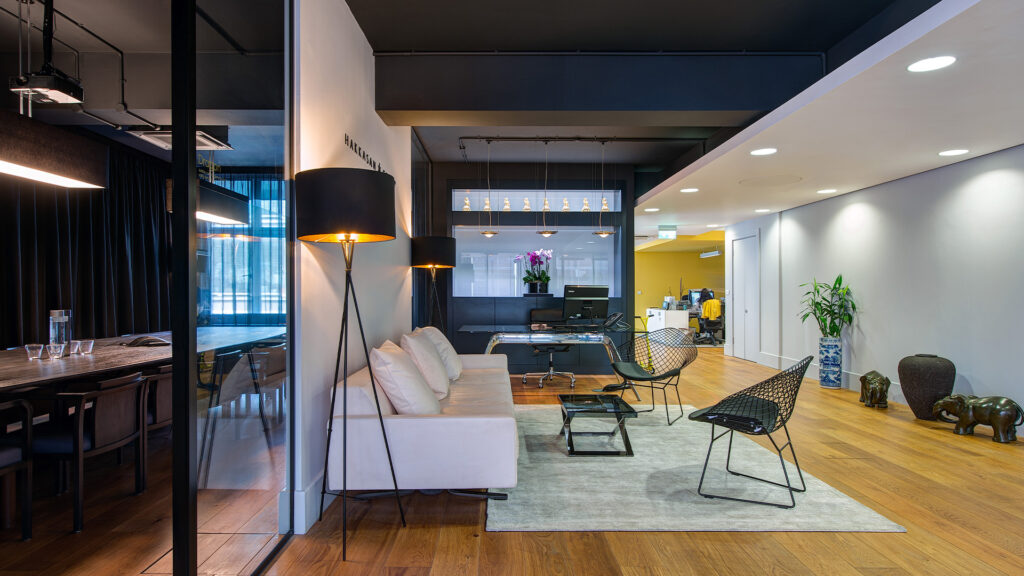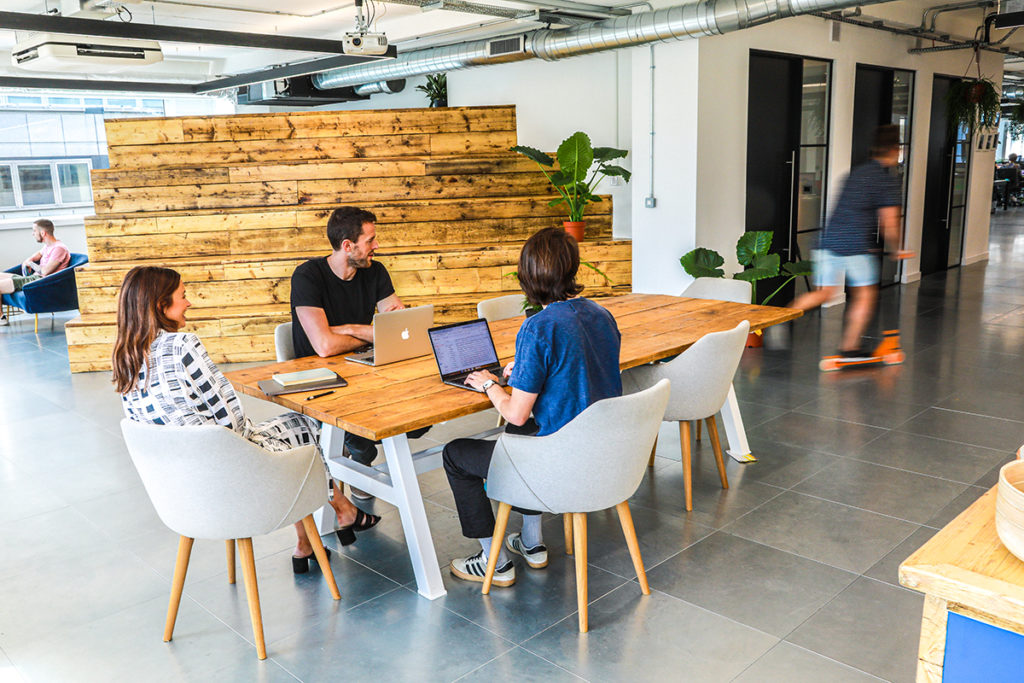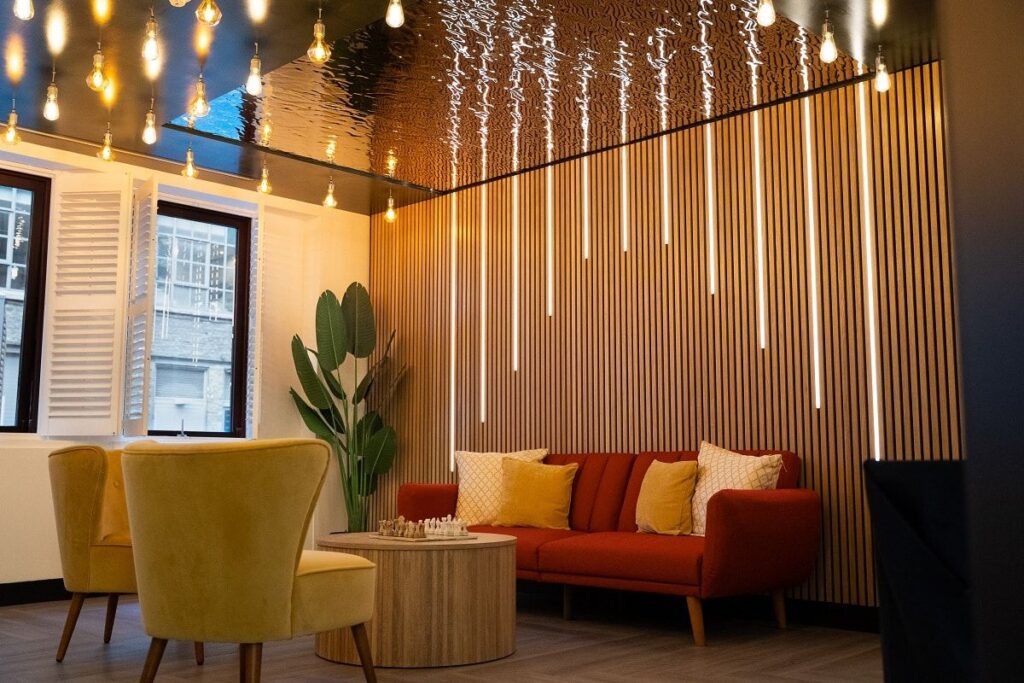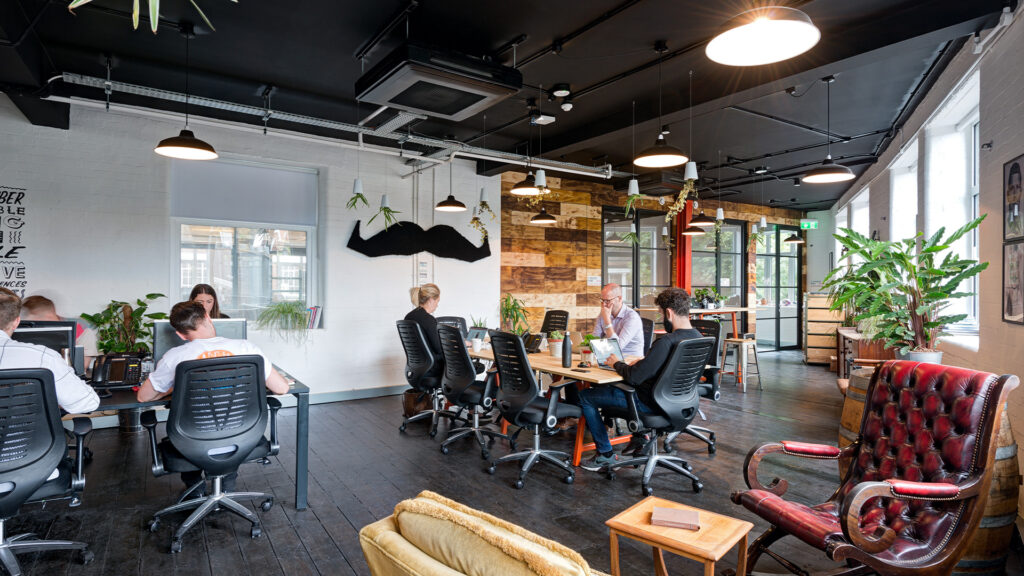The way your office is designed plays a massive role in how well you and your team perform. From the layout to lighting, noise levels to furniture choices, every detail contributes to the efficiency and well-being of employees.
If your workspace is uninspiring or uncomfortable, it can lead to reduced focus, increased stress, and even higher staff turnover. But when done right, a well-designed office can boost morale, enhance collaboration, and improve overall output.
The Link Between Office Design & Productivity
Office design is not just about aesthetics; it directly influences how efficiently people work. A study by the British Council for Offices (BCO) found that 97% of employees regard their workplace as a symbol of whether or not their employer values them.
Meanwhile, research by Leesman, which surveyed over 700,000 employees globally, revealed that only 57% of UK office workers believe their workspace enables them to work productively. This means almost half of employees feel their office is holding them back.
It All Starts With Office Layout
Open-plan offices were once seen as the future of workplace collaboration, but in this type of environment, it’s common for workers to be dissatisfied with noise levels, directly impacting their ability to focus.
It’s all about finding the sweet spot – offices that offer a mix of breakout spaces, meeting rooms, and individual desks tend to accommodate different working styles more effectively.
To take it a step further, businesses that invest in activity-based working (ABW) see improvements in efficiency and engagement. ABW provides different spaces designed for specific tasks, such as brainstorming areas, relaxation zones, and deep-focus pods. When employees have the freedom to choose where they work best, they become more engaged and efficient.
Lighting & Its Influence On Focus
Poor lighting can lead to eye strain, headaches, and fatigue, all of which reduce productivity. The Chartered Institution of Building Services Engineers (CIBSE) states that workplaces should have a minimum of 500 lux for standard office tasks. However, natural light remains the best option, with research showing that employees working near windows experience a 15% increase in productivity.
To maximise natural light, offices should have open blinds, glass partitions, and strategically placed workstations. Where natural light is limited, LED lighting with adjustable brightness can help maintain energy levels and reduce discomfort. Employers should also consider the psychological effects of lighting – warm lighting creates a relaxed atmosphere, while cool white light enhances focus and alertness.
The Effect Of Noise On Concentration
Noise pollution is one of the biggest complaints in UK offices. In fact, distracting acoustic conditions can cause workers to lose up to 86% of productivity. While some employees thrive in lively environments, others need quiet to concentrate.
One solution is incorporating soundproof meeting rooms, acoustic panels, or even ‘quiet zones’ within the office. Providing noise-cancelling headphones and soft furnishings like carpets and curtains can also help absorb sound and create a more focused work atmosphere.
In addition to physical modifications, businesses can establish ‘quiet hours’ where non-essential conversations and meetings are minimised. This can be particularly beneficial in high-concentration tasks such as writing, coding, or data analysis.
Furniture Quality Affects Productivity, Too
Uncomfortable furniture doesn’t just lead to physical discomfort – it affects work performance, too. Investing in ergonomic chairs, height-adjustable desks, and proper monitor positioning can significantly reduce strain and improve posture.
Employers should also consider breakout areas with comfortable seating for informal meetings or relaxation. When employees have comfortable spaces to unwind, their overall well-being improves, leading to better work performance.
Air Quality & Temperature Control
Many offices underestimate the importance of air quality and temperature control. Studies show that poor ventilation can cause sluggishness, headaches, and increased sickness absence. The UK Green Building Council found that well-ventilated offices can lead to an 11% increase in productivity.
Temperature also matters – productivity peaks at around 21–22°C. Anything too hot or too cold can cause discomfort and disrupt focus. Employers should ensure air conditioning and heating systems are regularly maintained to keep the workspace at an optimal temperature.
Air purification systems and indoor plants can also improve air quality, reducing pollutants and boosting employee well-being.
Incorporating Greenery For Mental Well-Being
Biophilic design, which integrates natural elements into the workplace, has been proven to enhance well-being and performance. Greenery reduces stress, improves air quality, and makes the environment more inviting. Simple additions like desk plants, green walls, or even a small indoor garden can have a positive impact on mental clarity and job satisfaction.
Personalisation & Employee Satisfaction
Allowing employees to personalise their workspace can also boost motivation and morale. Simple changes like allowing staff to have family photos, decorative items, or adjustable lighting can make a workspace feel more comfortable and engaging.
Keeping Technology Updated
An office may have the best design in the world, but if technology is outdated, productivity will still suffer. Slow computers, poor internet connections, and inefficient software can lead to frustration and wasted time.
To maintain a productive office environment, businesses should invest in high-speed internet, up-to-date hardware, and efficient software. Smart office features such as wireless charging, voice-activated assistants, and digital collaboration tools can also streamline workflows.
Ready To Boost Employee Productivity?
Your office environment directly influences how well you and your team perform. From lighting to noise levels, furniture to greenery, every element contributes to workplace efficiency. Research consistently shows that thoughtfully designed spaces lead to happier, healthier, and more productive employees. By creating an adaptable and well-equipped workspace, you can enhance focus, collaboration, and job satisfaction—ultimately leading to better business outcomes.
Related Read: How to Design a Mindful Workplace.
Frequently Asked Questions
How does the choice of office furniture influence employee productivity?
Ergonomic furniture reduces physical strain, leading to increased comfort and productivity. Adjustable chairs and desks that promote proper posture can decrease the risk of musculoskeletal issues, allowing employees to focus better on their tasks.
What role does colour psychology play in office design?
Colours can significantly impact mood and efficiency. For instance, blue hues are often associated with calmness and focus, while yellow can inspire creativity. Selecting appropriate colour schemes can enhance the desired atmosphere in different office areas.
How can incorporating natural elements, like plants, affect the work environment?
Introducing plants and natural materials can improve air quality and create a more inviting atmosphere. This biophilic design approach has been linked to reduced stress levels and increased employee satisfaction.
What is the significance of personalising workspaces for employees?
Allowing employees to personalise their work areas can boost morale and a sense of ownership. Personal touches, such as photos or decorations, can make individuals feel more comfortable and engaged in their work.
How can technology integration in office design enhance productivity?
Seamless integration of technology, like wireless charging stations and interactive whiteboards, can streamline workflows and encourage collaboration. Ensuring that technological tools are easily accessible supports efficient work processes.
How does indoor air quality affect employee health and productivity?
Good ventilation and air filtration systems reduce pollutants and allergens, leading to better health outcomes and fewer sick days. Clean air contributes to a more comfortable and productive work environment.
What are the advantages of incorporating recreational areas in the office?
Spaces like lounges or game rooms offer employees opportunities to relax and recharge. These areas can reduce stress and promote creativity, leading to improved overall productivity.


